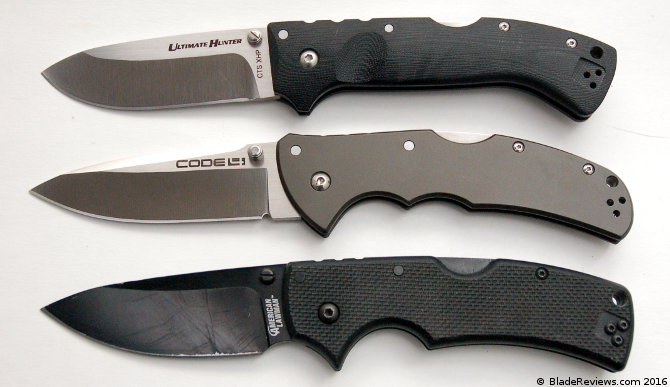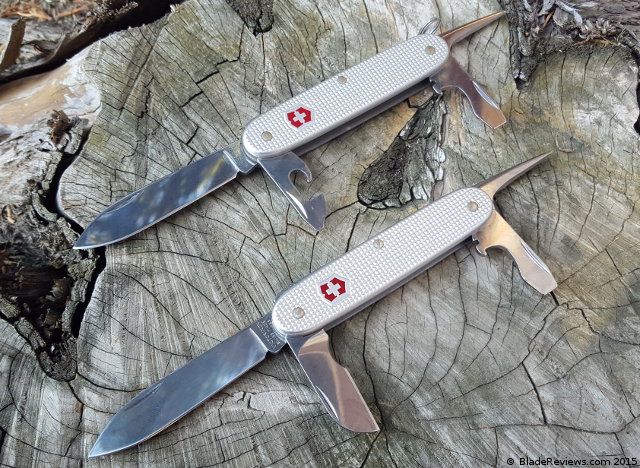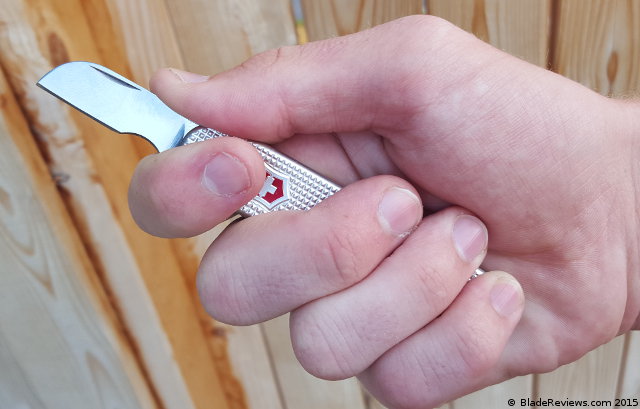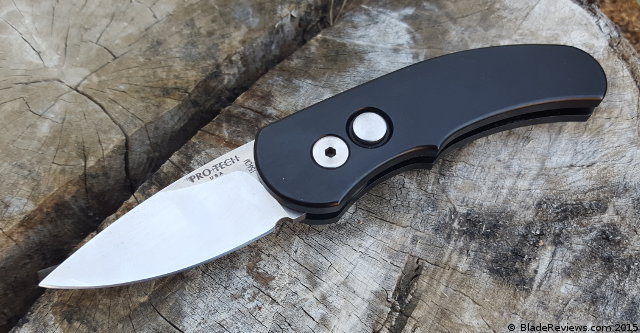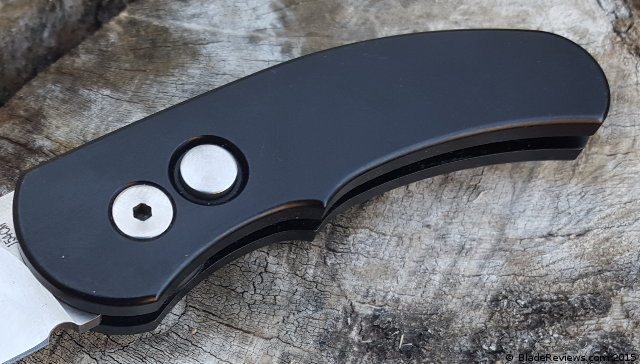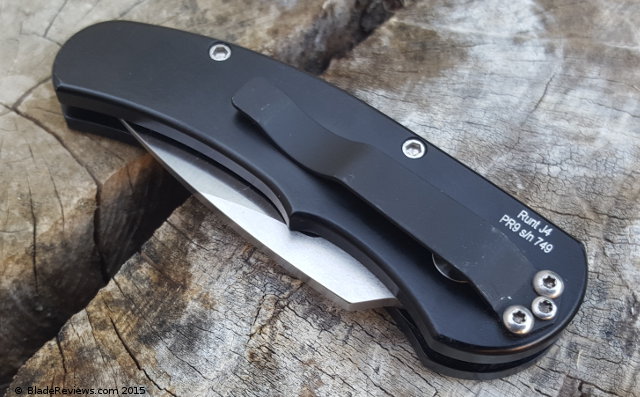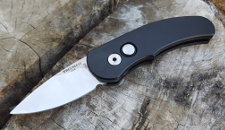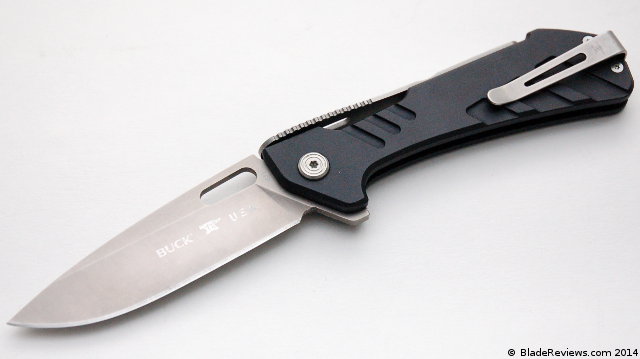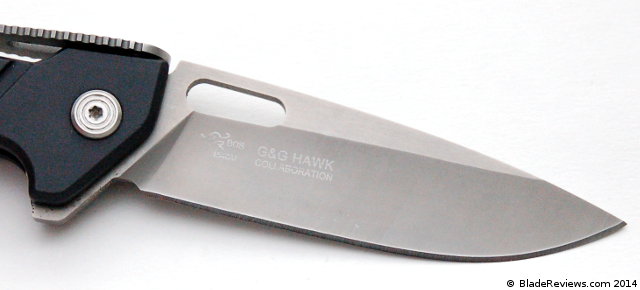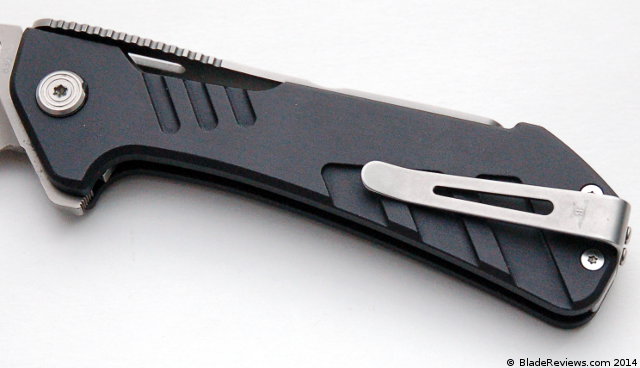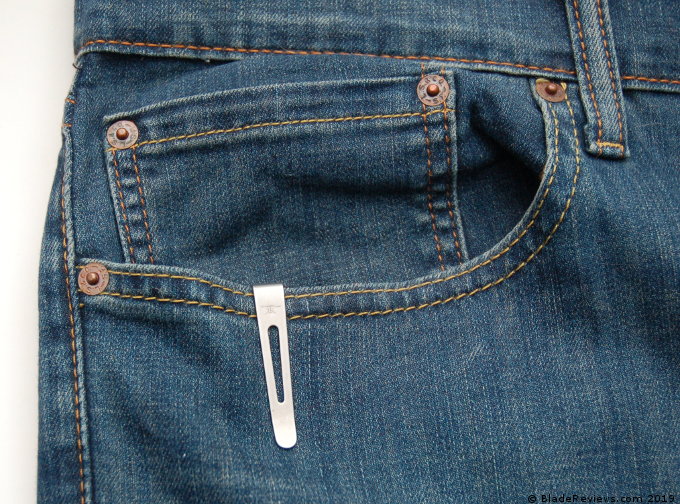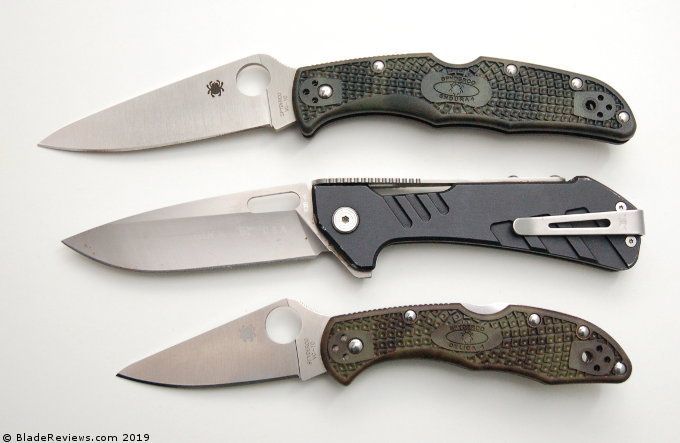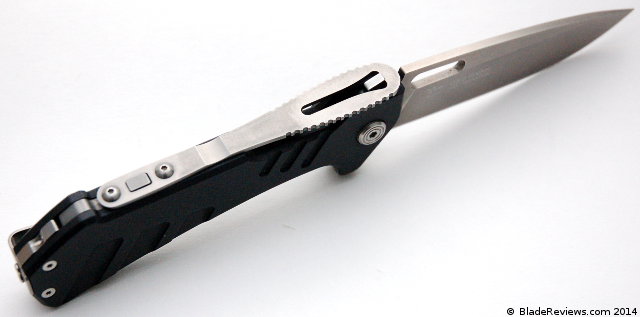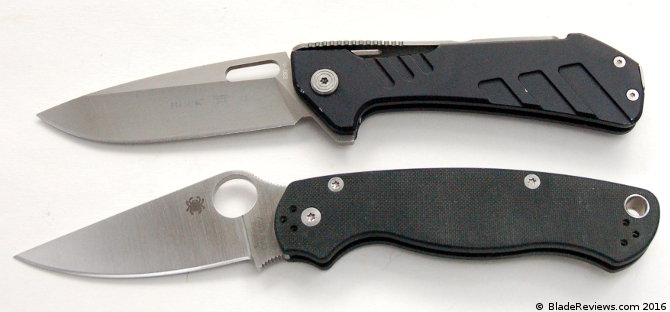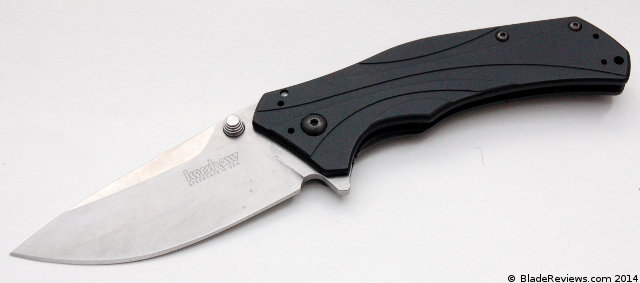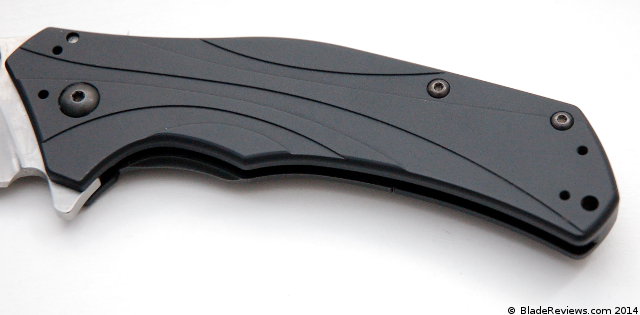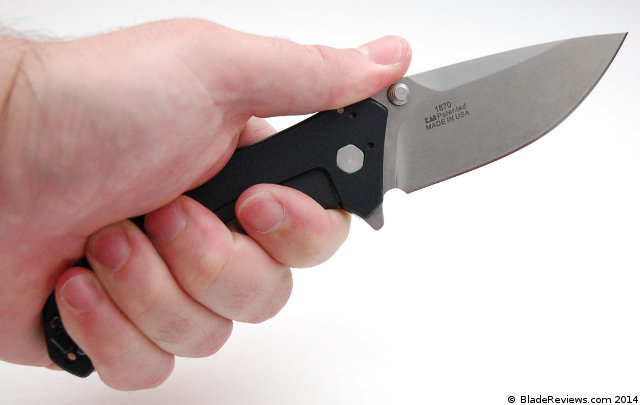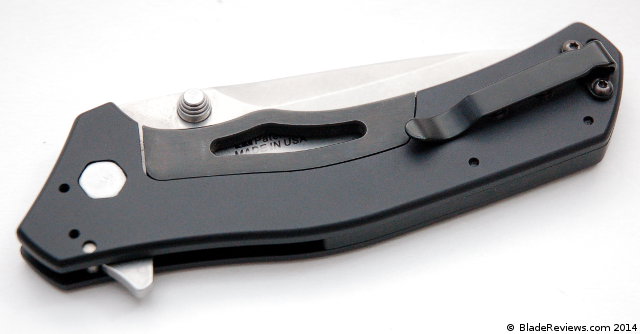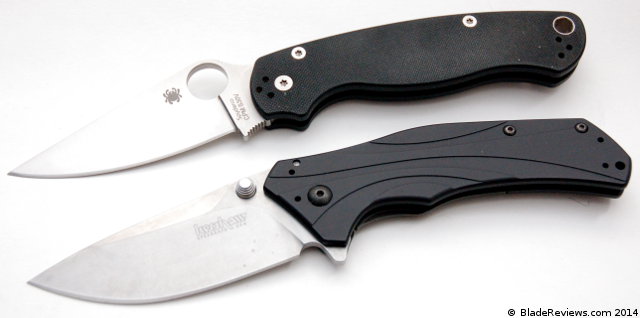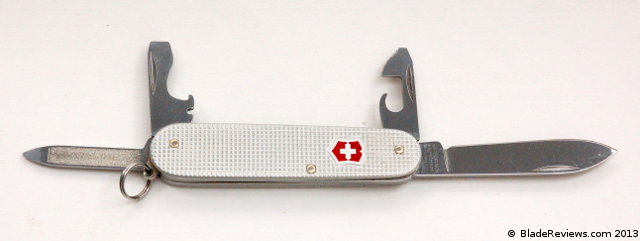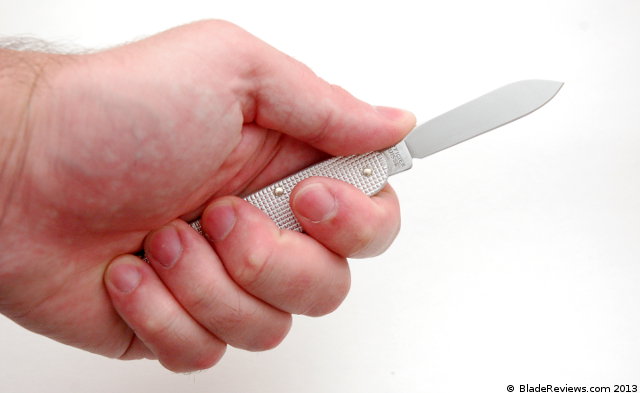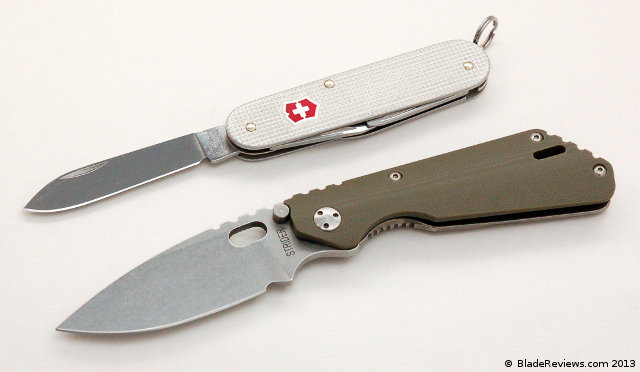I have slowly worked my way through most of Cold Steel’s standard folders. I have reviewed the Voyager series, the Recon 1s, the American Lawman (probably my favorite), and even some of their more colorful offerings like the Spartan and Rajah III.

Buy the Cold Steel Code 4 at BladeHQ
For some reason it has taken me a while to get to the Code 4 line of knives. The Code 4 series is different because they come with slim aluminum handles rather than G10 or plastic. Cold Steel advertises this as a police officer’s duty knife. Apparently a “Code 4” is police radio code for “No further assistance necessary”. Heady stuff.
At any rate, the knife is supposed to be light, slim, and tough. Functional yet easy to carry. That all sounds good to me. And once Cold Steel announced that they would upgrade the Code 4 to CTS-XHP I knew that I needed to make this model a priority. Soon enough I had one at my doorstep for review.
General Dimensions and Blade Steel
The Code 4 has an overall length of 8.5″, a 3.5″ blade, weighs 4.3 ounces, and is made in Taiwan. While it’s no Large Espada, this is still a big knife. Too big for me to EDC at the office, but certainly a good choice for the weekends or working in settings where a larger knife is appropriate. I can see where the Code 4 might make sense for a first responder or military member.
It is also worth mentioning that this is another clean and functional Andrew Demko design for Cold Steel. I have become a big Demko fan over the years, and think he has contributed a lot of great designs to the company.
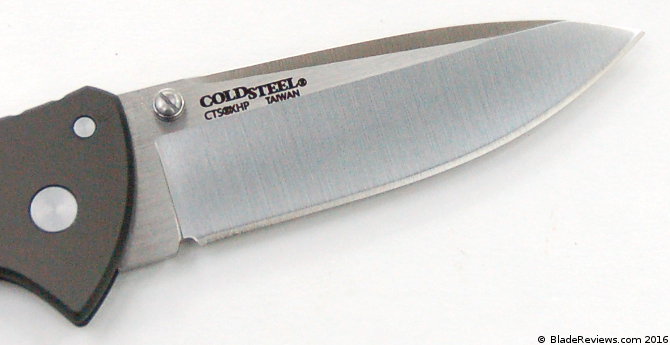
Cold Steel offers the Code 4 in 3 different blade shapes: clip point, spear point (shown here), and tanto. I settled on the spear point because I think it is the most utilitarian looking of the 3, and I used my Code 4 as an EDC and work knife.
Cold Steel also offers the Code-4 with either a plain edge or partially serrated edge. I prefer plain edges, especially if the knife is coming in a high end steel like CTS-XHP. Plain edges are easier for me to maintain and a quality steel like CTS-XHP will hold a good edge for a long time. No need for serrations for what I need to do, but that comes down to personal preference.
My knife came with a high hollow grind and a swedge (top false edge). The blade has been given an attractive 2 tone satin finish. It has held up well under normal use.
The big draw to this new version of the Code-4 is that it comes with CTS-XHP blade steel. CTS-XHP is a high end steel from Carpenter. I have a good amount of experience with CTS-XHP at this point, and I think it’s a good steel. Offhand, I would compare it with something like CPM-154.
The CTS-XHP blade steel on my knife came with an aggressive edge. The knife attacked cardboard, rope, and wood. The blade is a little over 3mm thick, but has no problem cleanly slicing apples and paper. Edge retention has been excellent. CTS-XHP is a significant upgrade over the old AUS-8 blade, but also comes at a significant bump up in cost (it seems to be anywhere from 50%-75% over the old Aus 8 version, depending on where you shop). CTS-XHP is also easy to sharpen. I think that it is an all around smart choice for a working knife.
Handle, Ergonomics, and Pocket Clip
The Code 4’s handle is aluminum handle slabs with stainless steel hardware, a stainless steel lock bar, and an aluminum backspacer. While the handle slabs are a raw bead blasted gray, it is interesting to note that the backspacer is actually anodized golden brown. The end result is a handle that is simple, thin, and elegant.
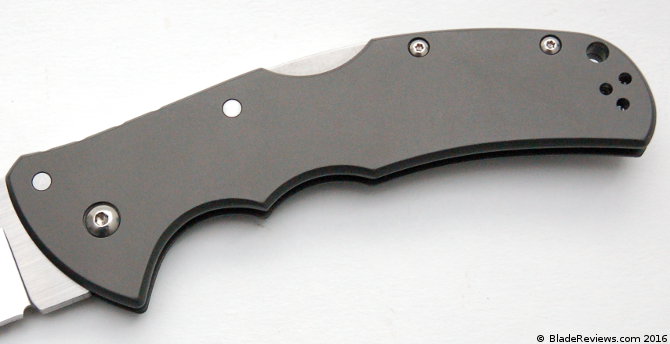
The handle is also beautifully finished. The edges are all gently chamfered, the hardware is all perfectly inset. This is an immaculate knife. This is also a strong knife. With full metal construction I would wager that the Code 4 is one of Cold Steel’s stronger folding knives.
The ergonomics of the Code 4 is perhaps the knife’s biggest caveat. The design is fine, with a generous handle, 2 finger grooves and a slight thumb ramp, but because the knife is so thin I found the Code-4 uncomfortable to use for more than a minute or so without gloves. It is fine if you are going to open up a box or do some light foodprep, but if you plan on breaking down a bunch of cardboard or working on some serious carving you are going to want some gloves. The thin handle is great in the pocket, but bites into your hand.
Depending on how you intend to use the knife, this may or may not be a problem. For those that are wanting a self defense blade, this may not be an issue. But if you work at a warehouse and break down boxes for a living, I would go for a knife with a thicker handle, like a Large Voyager or Recon 1.
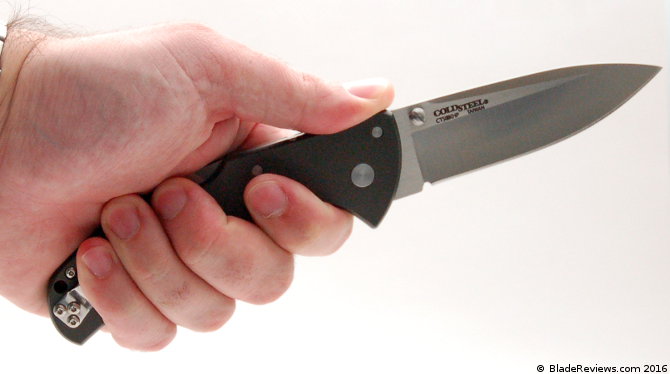
Although the Code 4 may not be the most comfortable knife in hand, it feels great in your pocket. It’s slim and discrete, and is likely ideal for someone like a police officer who carries a lot of gear and doesn’t have room for a massive pocket knife. At 4.3 ounces the knife is lightweight relative to its size and strength.

Cold Steel drilled and tapped the handle for tip up ambidextrous carry, and included 2 pocket clips for the knife. The pocket clips are simple steel clips, have good spring retention, and they work well. One nice thing about the lightly textured aluminum handle is that it does not tear up your pants like peel-ply G10.
Deployment and Lockup
The Code 4 comes with ambidextrous thumb studs. This is more like one and a half thumb studs, just like on the the American Lawman. The thumb stud is reversible with a flat head driver. There are phosphor bronze washers inside the handle, and the blade opens smoothly, and without too much effort. With that said, there is still a hefty backspring to overcome. This is not an easy knife to flick open. It can be done with practice, but won’t be a knife that you mindlessly flick open all day long.

The Code-4 comes equipped with Cold Steel’s infamous Tri-Ad lock. For the uninitiated, this is a lockback reinforced with a stop pin. Cold Steel has come under scrutiny lately over a gauche series of videos “comparing” the Tri-Ad lock to other locks on the market (where the Tri-Ad lock comes ahead by a wide margin). I am not sure what the value of these tests are when you consider the real world applications of a pocket knife, but it certainly has people talking.
Like all of the other Tri-Ad lock knives I have reviewed, this is a strong locking folder. There is not a suggestion of play in any direction on my knife. The lock is also reasonably to disengage, and doing so won’t kill your thumb. I am a fan of the Tri-Ad lock, and it is well executed here.
Blade centering is perfect on my example.
Cold Steel Code-4 – Final Thoughts
I am not sure why it took me so long to examine the Code-4, but I am glad I waited for the CTS-XHP version to come out. While the Code-4 is similar to knives like the Recon-1, the choice of aluminum for the handles over G-10 results in several important functional differences. The knife is super slim and easy to carry. I like that aspect of the Code-4 a lot.
What I am less enthused about is how the thin handle quickly becomes uncomfortable if you try to use the Code-4 for an extended cutting session. Gloves mitigate this somewhat, but this is an important point to mention. So often you hear reviewers (myself included) done on about how important it is for a pocket knife to be slim and light for easy carry. I still largely agree with that, but it’s important to understand that sometimes slimness has a price. In this case that price is comfort in hand. For that reason the American Lawman and Ultimate Hunter (both shown above) with their G10 handles won’t be leaving my collection any time soon.
I still think the Code-4 is an excellent tool and I intend to keep it in my collection. It’s like an upgraded Boker Titan Drop. If you primarily carry it for light utility and perhaps self defense (eg, as a police officer might carry it), then I think there is a lot going for the Code-4. It’s strong, intelligently designed, and nicely made. This is a no-nonsense tool, and I have no doubt that it will hold up for a long long time.
I recommend the Code 4 if you are seeking a long, slim, and strong daily carry folder, and don’t mind donning gloves for longer cutting chores.
- Made of highest quality material
- Manufacturer: Cold Steel
- Cold Steel Code 4 spear point plain edge 3.5in folding knife
I recommend purchasing the Cold Steel Code-4 at Amazon or BladeHQ. Please consider that purchasing anything through any of the links on this website helps support BladeReviews.com, and keeps the site going. As always, any and all support is greatly appreciated. Thank you very much.
